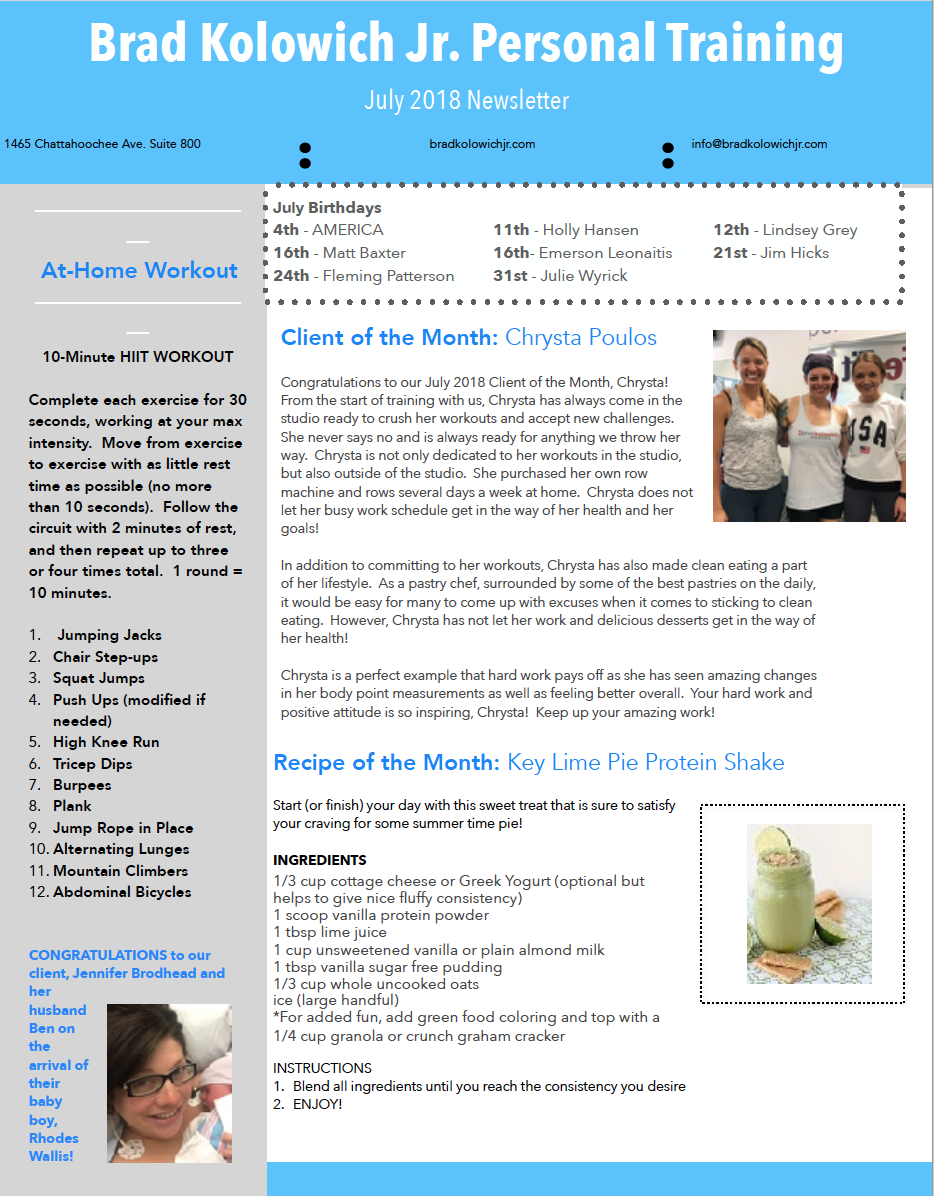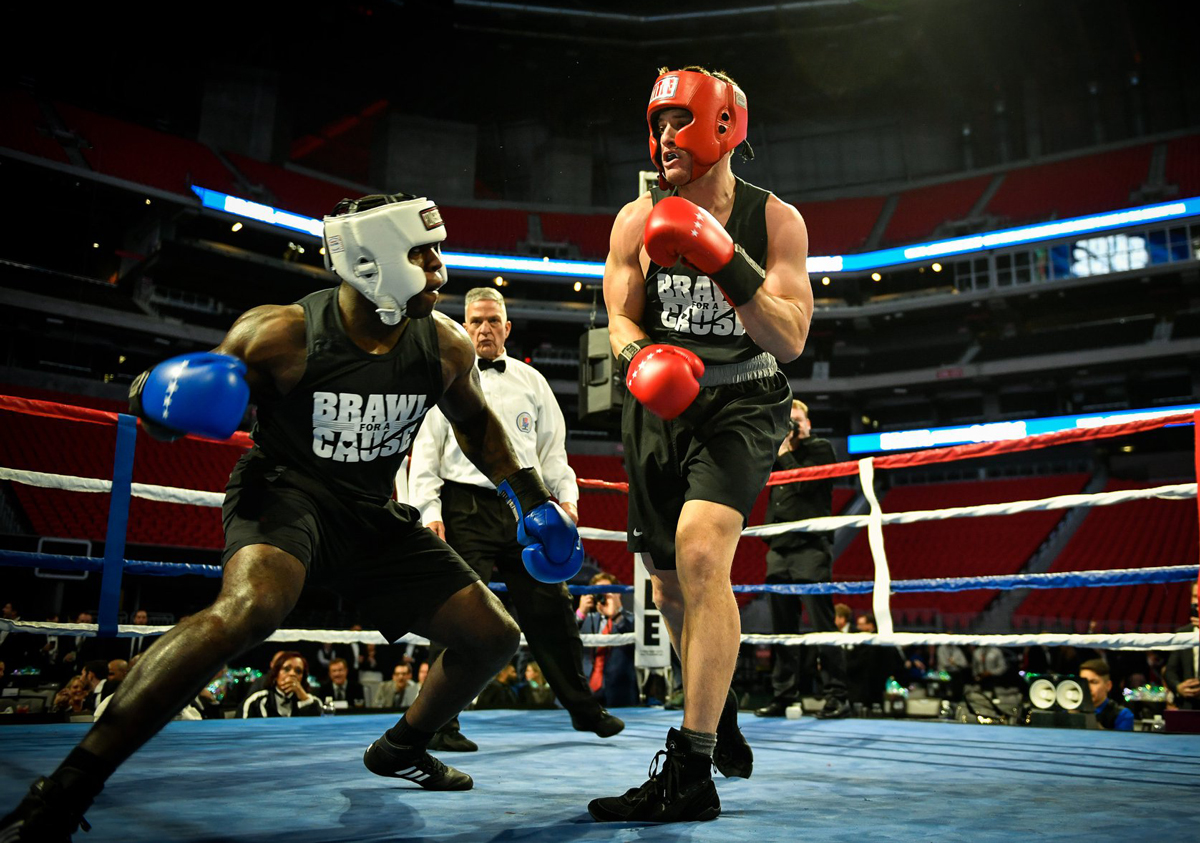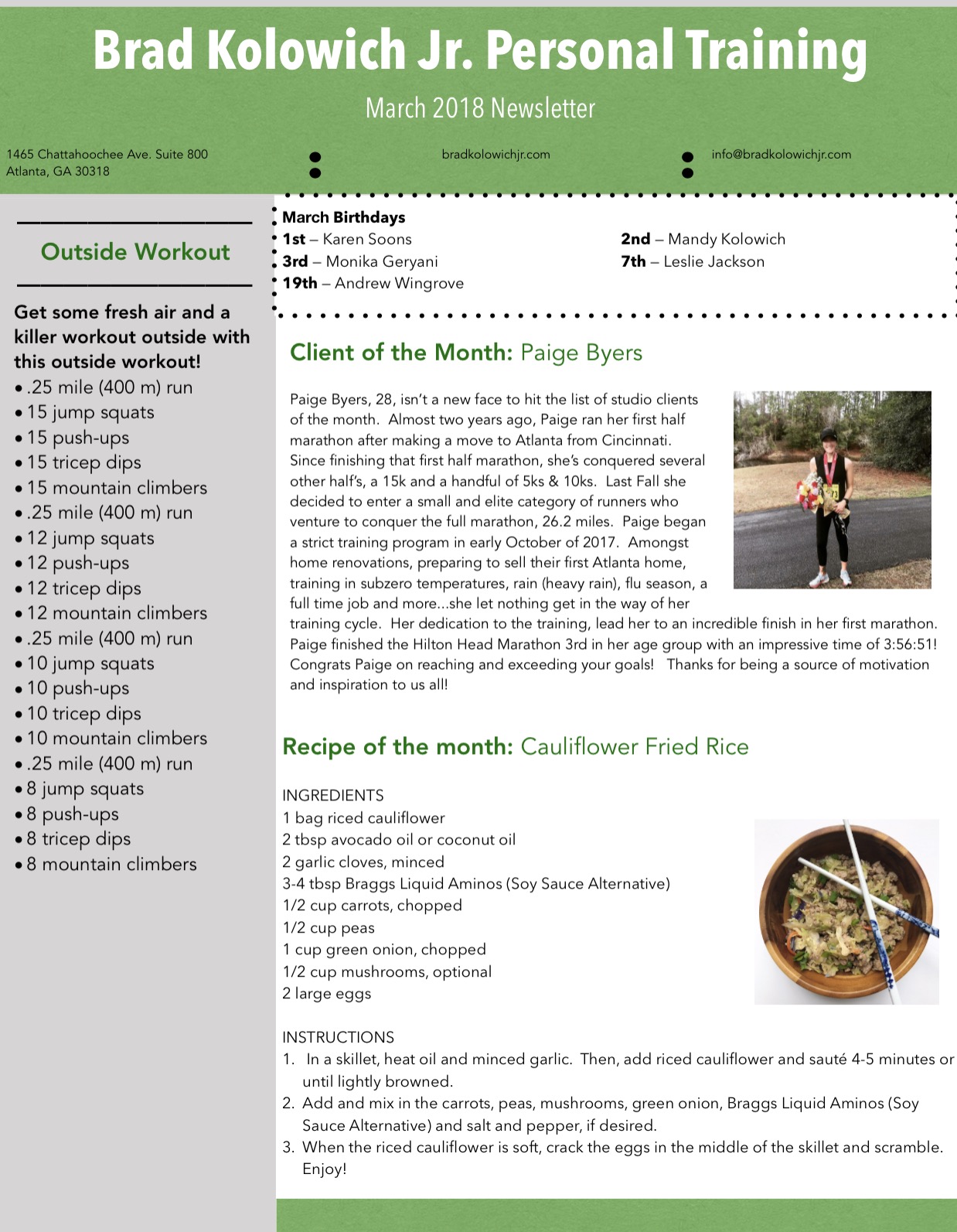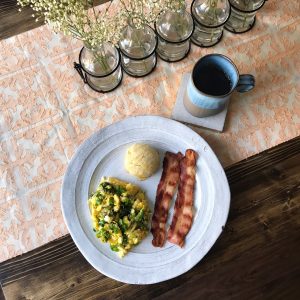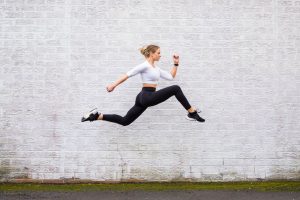Posts
Are you looking for a low carb breakfast idea for St. Patrick’s Day?
These Shamrock Fried Eggs are delicious, healthy and a lot of fun for St. Patty’s or any day of the year!
Ingredients
- 2 large organic green bell peppers
- 8 pastured eggs
- 2 tablespoons grassfed butter
- Sea salt, garlic powder and fresh ground pepper, to taste
Directions
- – Slice the bell peppers into rings that are about 3/4″ thick, for a total of 4 rings per bell pepper
- – Melt half of the butter in a frying pan, preferably cast iron, over medium-high heat
- – Place 4 of the bell pepper rings in the cast iron pan and turn once, after a minute
- – Crack an egg inside each bell pepper ring
- – Season the egg with sea salt, garlic and pepper
- – Cover the pan with a lid and cook until the white is set and the yolk reaches your desired doneness. It should take about 3-5 minutes
- – Remove the shamrock fried egg from the pan and serve while hot. I like to top mine with Cholula Green Pepper Sauce
- – Repeat with the remaining tablespoon of butter, 4 bell pepper rings and eggs
- – Now the whole family can enjoy a fun St. Patrick’s Day low carb breakfast together that’s fun and healthy!
Recipe adapted from: Happy Mothering, Chrystal Johnson
Boxing, running, dead lifts—diabetes doesn’t hold this Atlanta personal trainer back
Jonathan Kolowich, who was diagnosed with type 1 diabetes at age 12, wants other diabetics to feel as empowered and powerful as he does
Jonathan Kolowich is the kind of fitness trainer whose Instagram videos make you say, “Wait, whaaaaaat?” We’re talking about moves like Turkish get-ups with a heavy barbell, or push-ups on one arm and one leg, or plyometric push-ups that jump from benches to the floor and back, or getting punched in the gut while doing abdominal exercises. And he makes it all look kind of easy. It’s not—and not just because these kinds of physical feats take practice, strength, and stamina. Every day Kolowich has to think about, monitor, and manage his blood sugar because he has diabetes. But he never lets the disease stop him from being healthy and strong. And he wants other diabetics to feel just as empowered and powerful.
Kolowich has type 1 diabetes, the kind that typically develops in children and adolescents and occurs when the immune system attacks the insulin-producing cells in the pancreas. Type 1 diabetics have to watch their glucose levels and take insulin to keep their blood sugar from going too high or too low. Type 2 diabetes tends to affect adults (though it can also affect children), and occurs when there’s perhaps enough insulin but the body can’t process it. Obesity ups the risk.
“Diabetes doesn’t have to be limiting,” Kolowich says. “You can still do everything that other people do. You just have to be conscious about it.”
Kolowich spreads this message with tips and workouts at diabetesstrength.com and recently raised more than $7,500 for the Juvenile Diabetes Research Fund at Brawl for a Cause, an amateur boxing event at Mercedes-Benz Stadium. He’d never been in a bout before, but every year he takes on at least one new physical challenge. Some years it’s a running race, other years a new kind of workout. For the brawl he trained with Adam Gil, a former boxer and fellow trainer at Brad Kolowich Jr. Personal Training (owned by Jonathan’s brother), as well as at a boxing gym.
To be sure, Kolowich isn’t blasé about these physical challenges; he knows he must be vigilant about what he eats and how he trains. That’s been true since he was 12 years old. That year he lost 20 pounds over a two-week period. When his mother took him to the doctor, the diabetes diagnosis came quickly.
“My blood sugar was 1,000, and it was supposed to be 100,” he says. “They knew right then and there that it was diabetes. It was definitely the biggest life-changing moment of my life.”
He had to prick his finger six to 10 times a day and give himself shots of insulin to stay even-keeled while he played baseball, basketball, and tennis. “Exercise can knock down your blood sugar,” he says. “That was tough. I always had to have sugar on hand in case of emergency. When it would go low, it was really scary. I once fainted on the baseball field. And when I was 16, driving home from practice, I passed out. Thankfully no one was hurt.”
When he went on to play baseball in college, on scholarship at Georgia State University, Kolowich would carry a candy bar in his back pocket, keep juice in the dugout, and check his blood sugar frequently on game day.
Now, as a personal trainer, he doesn’t use candy to keep himself stable. He tries to eat clean about 90 percent of the time, and if his blood sugar drops he’ll take glucose tabs or eat a banana or pineapple. For a while Kolowich used an insulin pump and monitor to keep his numbers in check, and that allowed him to live a very normal life. But the equipment wouldn’t work for boxing—he would too often get punched in the stomach, the site of the port and tubing for his pump. So for several months he was back to pricking his fingers and giving himself injections, and carefully managing his numbers.
“If my blood sugar is off, my reaction times can be slower, and in boxing, reaction is everything, so I had to be really careful,” he says. “I was being super aware.”
He trained hard, doing squats, hang cleans, push presses, rows, and at least 45 minutes a day of boxing with Gil or shadowboxing. For his diet, Kolowich ate a lot of meat, vegetables, and low-glycemic fruits like berries. To drink, he stuck with water and iced coffee. His numbers stayed mostly stable, and on the day of the fight, he checked them every 30 minutes to make sure they remained so. Gil, who served as one of the corner men during the fight, held on to a juicebox for Kolowich, just in case.
His blood sugar remained stable, and he went on to win the fight. “I crashed about an hour after the fight,” Kolowich says. “In boxing, even six minutes feels like an hour. I was definitely smoked and tired. But it was so worth it. It was fun to be part of that event. It wasn’t just about getting in the ring and killing each other. It was getting in the ring for a cause that’s close to my heart.”
Article adapted from: Atlanta Magazine, Christine Van Dusen
Keto Biscuits
Servings: About 6 Biscuits
Ingredients:
2 cups almond flour
1/3 cup grass fed butter, softened
1/2 tsp salt
2 eggs
Directions:
- Mix wet ingredients in mixing bowl, then add dry ingredients.
- Scoop a couple tablespoonfuls and drop on pan.
- Form biscuit shape and bake for 15 minutes, or until browning on top.
Enjoy!
Booty and Ab Burner
Join us for our all new Booty and Ab Burner Group Fitness Class for a great workout, open to all levels of training.
To sign up, email class@bradkolowichjr.com.
Date: Saturday, January 13
Time: 8:05am – 8:55am
Price: $30
Place: Brad Kolowich Jr Personal Training Studio
We look forward to seeing you there!
Best,
Caroline Kolowich
Story at-a-glance
- Less than 25 percent of Americans over 45 engage in resistance training, which may be the most important exercises you perform to stay fit and healthy
- Researchers found seniors who incorporate resistance exercises enjoy a higher perceived quality of life and psychological health
- Resistance training is associated with a reduction in age-related muscle mass and strength loss, improved balance and cognitive performance and a reduction in body fat with better weight management
- It is never too late to start resistance training, but pay close attention to any physical restrictions from medical conditions, wear appropriate clothing, start slowly, keep your eyes open and do the exercises with proper form and posture
By Dr. Mercola
“Strong body, strong mind” is not just an expression. Scientific evidence demonstrates regular exercise improves your productivity, sleep quality and blood flow to your brain,1 while reducing the development of damaging neurological plaques.2 Unfortunately, less than 25 percent of Americans over the age of 45 engage in resistance exercises,3 which are among the most important exercises to stay fit and healthy.
In fact, your muscle strength begins decreasing in your 30s by as much as 3 to 5 percent of muscle mass per decade4 after 30, unless you do something to stop it.
Resistance training, also called strength training, is the strategy you use to stop this natural decline of strength and muscle mass. But, gaining strength is only one of the benefits of resistance training, as this form of exercise also helps prevent osteoporosis, improves your range of motion and improves your ability to do your functional day-to-day activities with greater ease.
When done properly, strength training can even be a form of aerobic exercise and will help you lose weight. After nine months of studying the effects of resistance training on senior citizens, researchers also found the participants enjoyed improved psychological health.5
Study Reveals Resistance Training Affects Your Psychological Health
During this study, the researchers investigated the effect of resistance training on the psychological health of seniors, as opposed to focusing solely on physical changes. The study’s lead author and Ph.D. candidate at University of Jyväskylä, Tiia Kekäläinen, commented on why the team began the study of the mental effects strength training has on this age group, saying:6
“The importance of resistance training for the muscular strength and physical functioning in older adults is well-known, but the links to psychological functioning have been studied less.”
The researchers sought out 104 healthy participants between 65 and 75 years who did not meet the minimum physical activity recommendations for aerobic exercise by the World Health Organization (WHO) and had no previous strength training experience.7 The participants were randomly assigned to one of four groups.
Three of the groups were assigned resistance training and the fourth was the control group, who continued their usual activities. The strength training groups underwent an initial practice and training in resistance work twice per week for three months to familiarize themselves with the workout. Following this, they underwent progressive strength training for the following six months.8
Over these nine months the participants completed assessments that evaluated their psychological functioning. These occurred at the start, before any training began, and then at three months, six months and nine months when the study concluded. The participants were also asked about their aerobic capacity and had a physical strength test completed.
Health Is Not Just the Absence of Illness
The researchers measured quality of life, sense of coherence and symptoms of depression. Sense of coherence is a concept developed by Aaron Antonovsky in 1979 to describe why some people get sick in stressful situations and others don’t.9 The scale measures a mixture of optimism and perception of control over your environment.
Quality of life was measured using a WHO questionnaire that examined the perception of the participant’s position in life relative to their own expectations, concerns, goals and standards within their culture and value system. It captured the quality of life in the participant’s physical, psychological, social and environmental domains.10
The assumption of the researchers was that the health of an individual is measured by more than the absence of illness or disease. The researchers found that at three months, the participants in the training groups exhibited greater environmental quality of life over those in the control group. Environmental quality measured satisfaction with the individual’s physical safety, leisure activities and access to care.
By month nine, at the end of the study, there was also a significant improvement in sense of coherence in the group that participated in resistance training twice a week.11 The results of the study suggest that the ability of seniors to manage their environment and their life may improve with the addition of resistance training. The researchers proposed further study to differentiate the benefits between consistency and frequency in resistance training.
Strength Training Benefits Your Whole Body
The benefits of strength training go beyond improving your mental and psychological health. As strength training builds lean muscle mass it also increases your caloric burn during exercise and afterward, helping you lose weight and maintain weight loss. In a study published in the Journal of Applied Physiology,12 researchers found aerobic exercise helped reduce body fat while resistance exercise improved lean body mass.
This is good news for those who incorporate strength training into their weekly routine since you can easily do aerobic and resistance training at the same time, reducing your time commitment and boosting your results. Strength training stresses your bones, which increases your bone density13 and reduces your risk of osteoporosis. Resistance training improves muscle strength and mass supporting your large joints, such as your knees and hips that bear much of the stress when you are walking and moving.
This strength reduces pain related to osteoarthritis14 and reduces your risk of injury.15 Additionally, exercise, including strength training, has demonstrated improvement in cognitive performance. In a study published in the journal Clinical Interventions in Aging, researchers concluded:16
“The present study demonstrated that regular resistance exercises could provide significant gains on the upper and lower body strength concomitant to positive improvements on cognitive capacities of elderly women, bringing enhanced life quality.”
Resistance training also has a positive effect on anxiety. In a study published in Frontiers in Psychology, researchers found those who practiced low-to-moderate intensity resistance exercises enjoyed a reliable reduction in symptoms of anxiety.17 These results appeared to be consistent across a diverse range of populations.
Resistance Exercises May Prevent Long-Term Care in the Elderly
Aging Americans are more concerned about losing their independence and moving to a nursing home than they are about dying.18 Falls are a top cause of accidents in people over age 65 and a real threat to the ability to continue to live on your own.19 The National Institute on Aging recommends physical activity and regular exercise to improve balance and strength while reducing your risk for falling.20
Research has demonstrated that progressive strength training in the elderly can reduce sarcopenia (age-related muscle loss), and helps you retain motor function.21 Age-related decline in muscle mass and strength may be an early indicator of the potential for falls in the elderly, even those who are not frail.22 Studies have also demonstrated that resistance training improves balance in the elderly,23and may be more effective in reducing the risk for falls than aerobic or cardiovascular training.24
In 2015, the cost to Medicare exceeded $31 billion to cover the health care needs of elderly who had fallen.25 Every year over 800,000 are hospitalized due to an injury after a fall and the average hospitalization is over $30,000.26 In a study of nearly 875 community-dwelling women near the age of 70, 35 percent reported they had fallen, 33 percent of those had fallen twice or more and over 70 percent reported being afraid of falling.27
Improving strength and balance in the elderly may reduce the number of those who fall and the overall direct and indirect medical costs to families and the community. A reduction in falls and in the anxiety seniors feel about falling may also improve overall quality of life.
Easy Strength Training for Seniors
You don’t have to go to the gym three times a week to participate in a resistance program to improve your balance, strength and mental health. Instead there are exercises you can do at home that accomplish those goals and can be done at your convenience. Before plunging headlong into the latest YouTube home workout, think about the following:28
|
Consider your medical history If you have a current medical condition, such as arthritis or cardiovascular disease, or a current injury, you may want to work with a physical therapist or certified personal trainer who has experience designing and adapting exercises to your personal situation. Include strength training with flexibility activities that help improve balance and your range of motion. |
|
Schedule Choose times of the day when any inflammation or pain is at the lowest level. Avoid exercising when your stiffness is at the worst, such as first thing in the morning. |
|
Warm up Whether you have a form of inflammatory joint disease or not, it is important to warm your muscles and joints using gentle stretches or lower intensity exercises. Muscles and joints that are warmed up have additional blood supply that may help reduce your risk of injury. |
|
Start slowly When starting resistance exercises you may easily overdo it and suffer from inflamed muscles that can sideline you for weeks. If you have an inflammatory condition such as arthritis, consider balancing your exercise and rest carefully. You may find water workouts are a better choice until the inflammation has receded. |
|
Clothing Wear comfortable, nonrestrictive clothing so you can easily perform all movements within your body’s range of motion. Avoid wearing rubber soled shoes, as they may increase your risk of tripping. Leather soles are ideal, but it’s also important you wear what’s compatible with the surface you’re working on as you don’t want your feet to slide unexpectedly. |
|
Keep watch Do not close your eyes during the exercises as it dramatically increases your risk of losing your balance. During exercise you may feel relaxed, fatigued or think you’ll be able to concentrate on the exercises better with your eyes closed. Resist the temptation. |
|
Posture Pay close attention to your form and posture while performing exercises. Unbalanced or improper weight distribution may lead to injury. If you are frail or have poor balance, be sure to perform all exercises with supervision and assistance. |
|
Exercises I have three different resistance workouts developed that may help you get started. Remember, it is never too late to start! In the first, “Basic Exercise Guide for Older Seniors and the Infirm,” there are seven basic seated and standing exercises that help you get started. The second, “Easy Strength Training Moves for Seniors,” are exercises that help you perform everyday activities with greater ease and confidence. The third, “Majority of Adults Need More Muscle Strengthening Exercise,” includes more advanced exercises, some of which may still be done at home.
|
Adapted from: https://fitness.mercola.com/sites/fitness/archive/2017/12/15/resistance-training.aspx
info@bradkolowichjr.com
KoloFit Training Studio
1465 Chattahoochee Ave.
Suite 800
Atlanta, Ga. 30318

